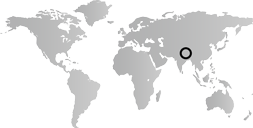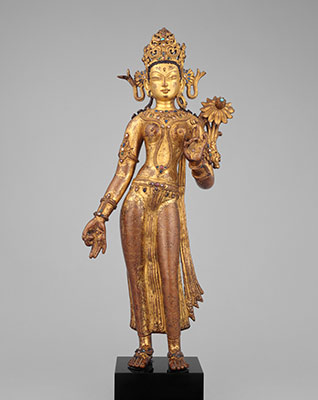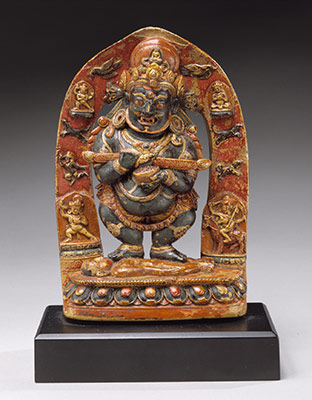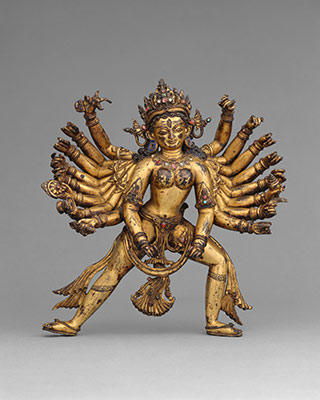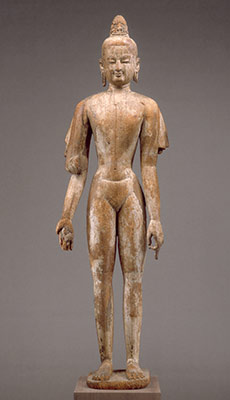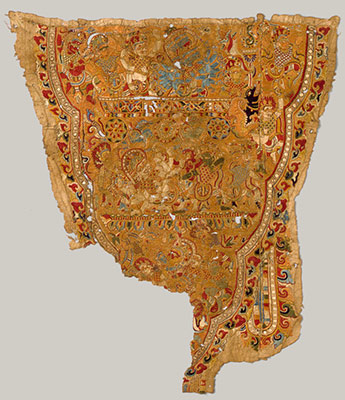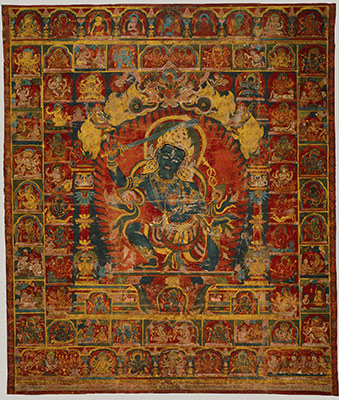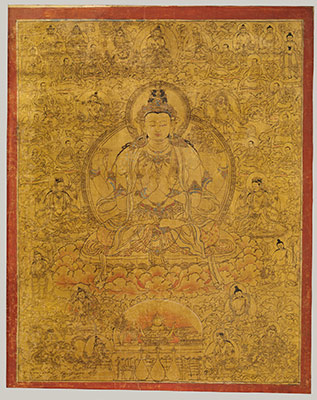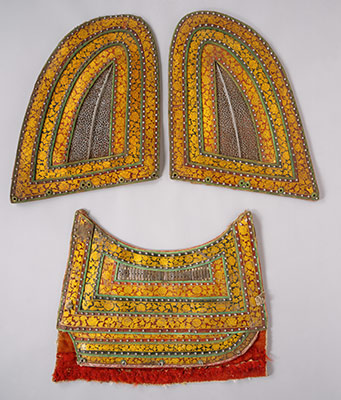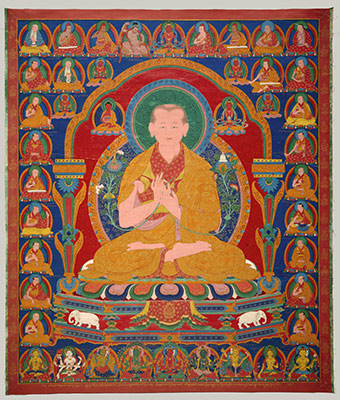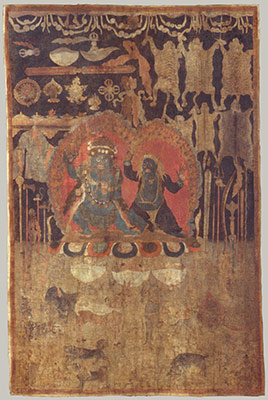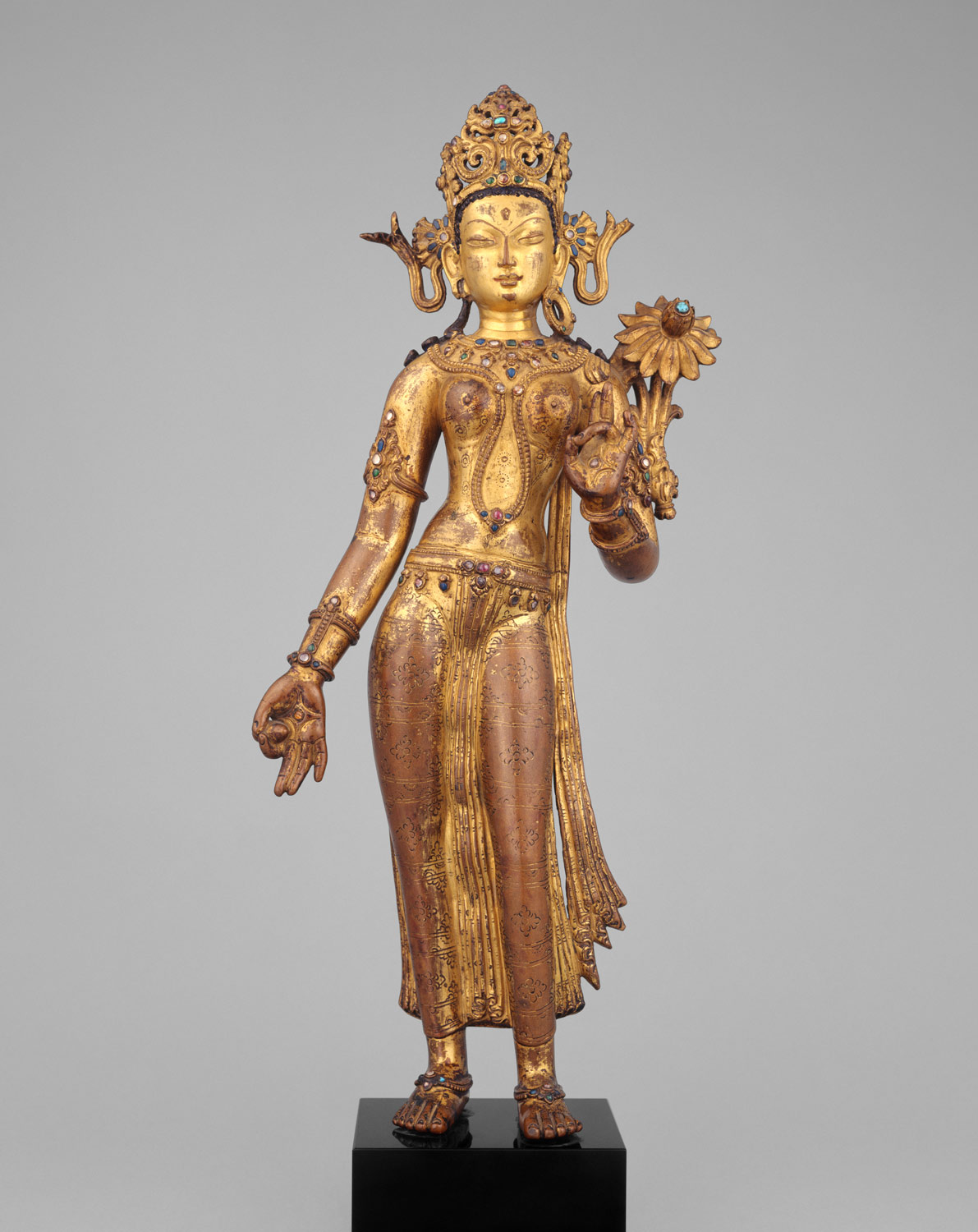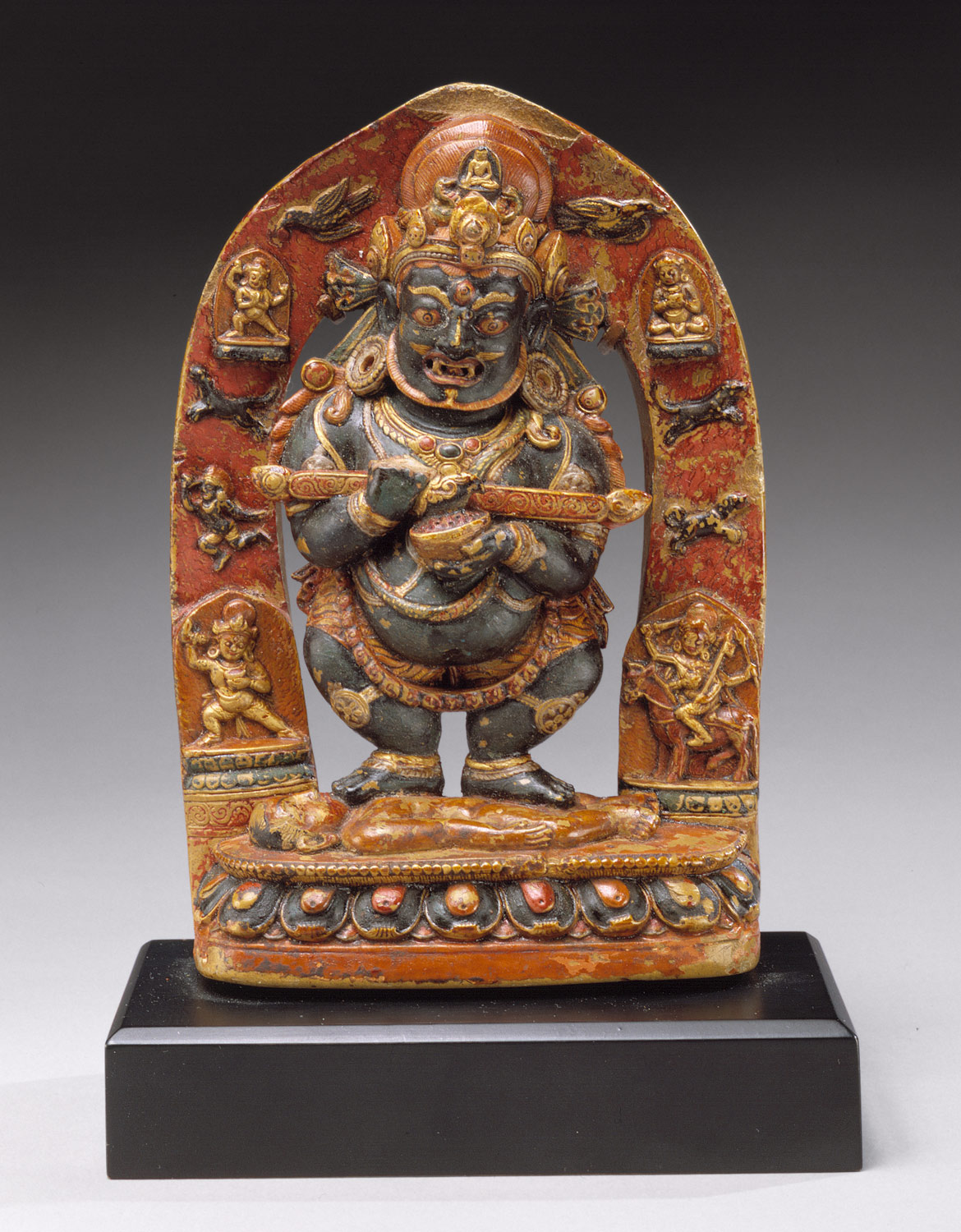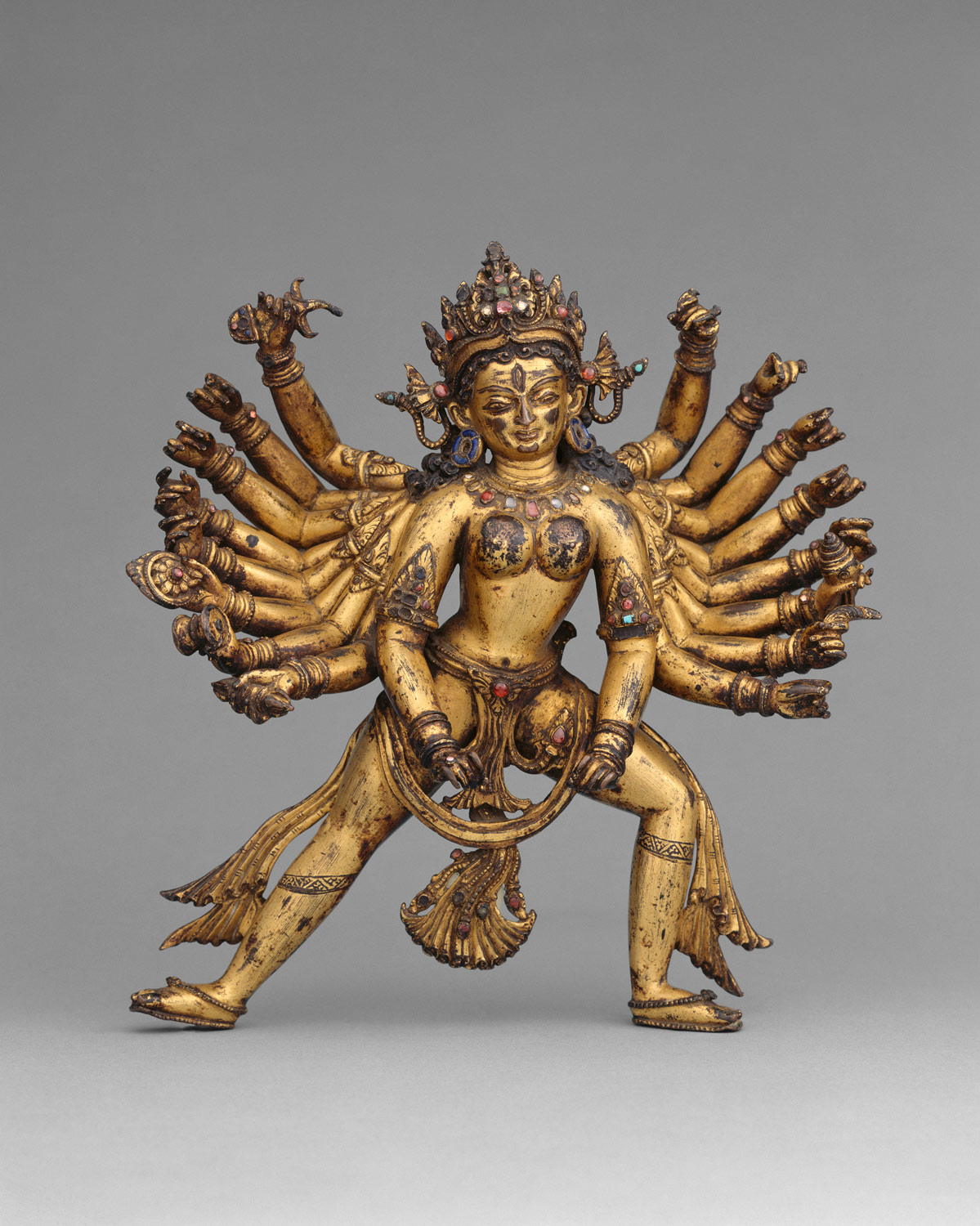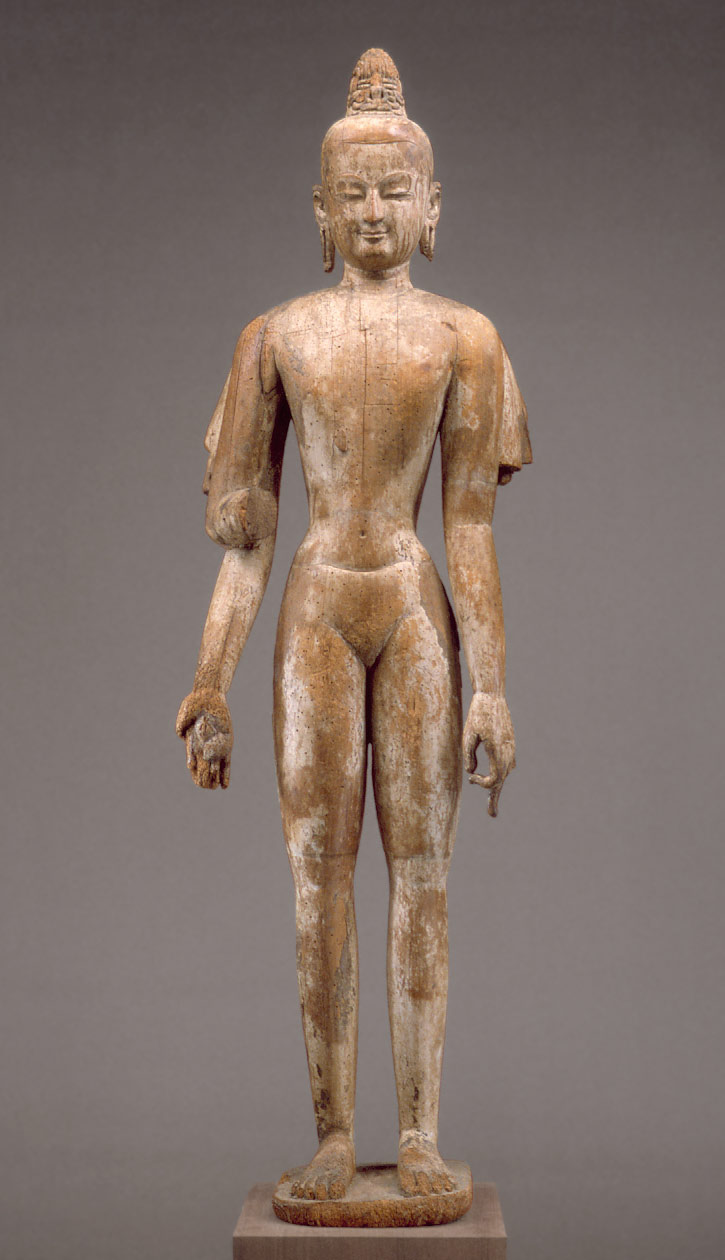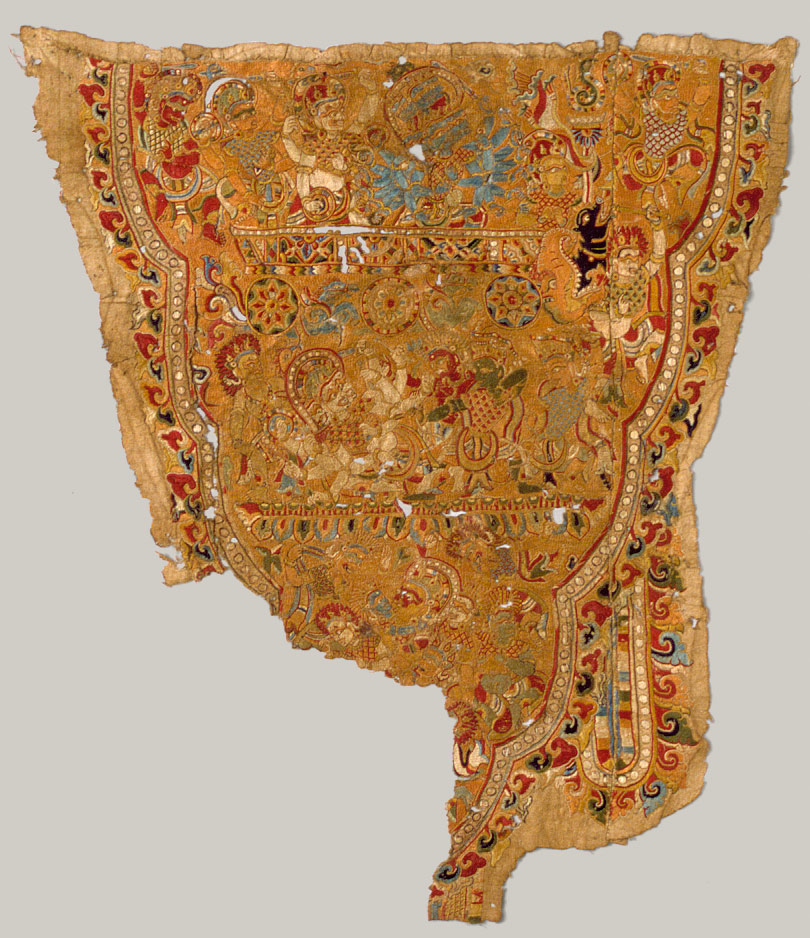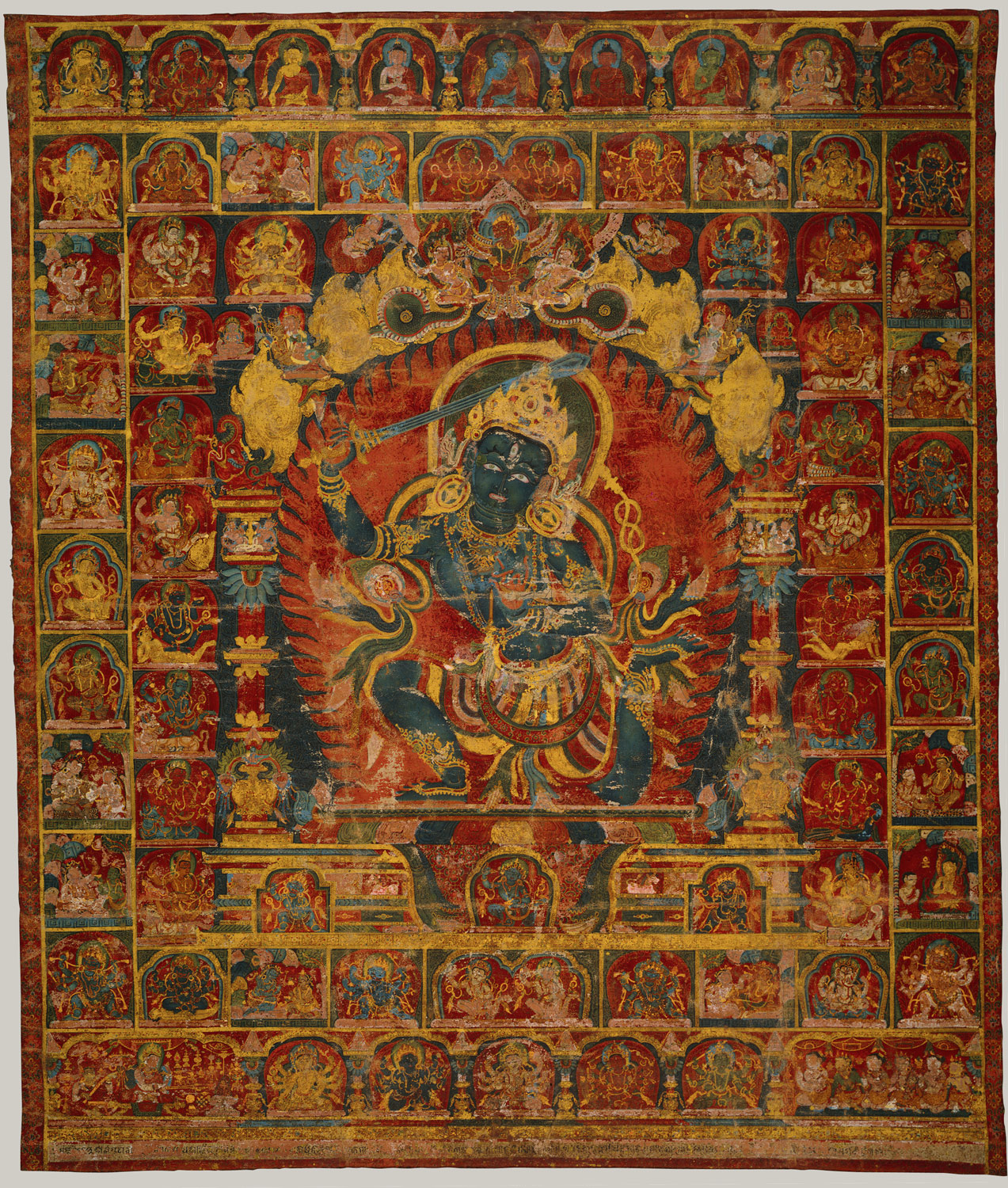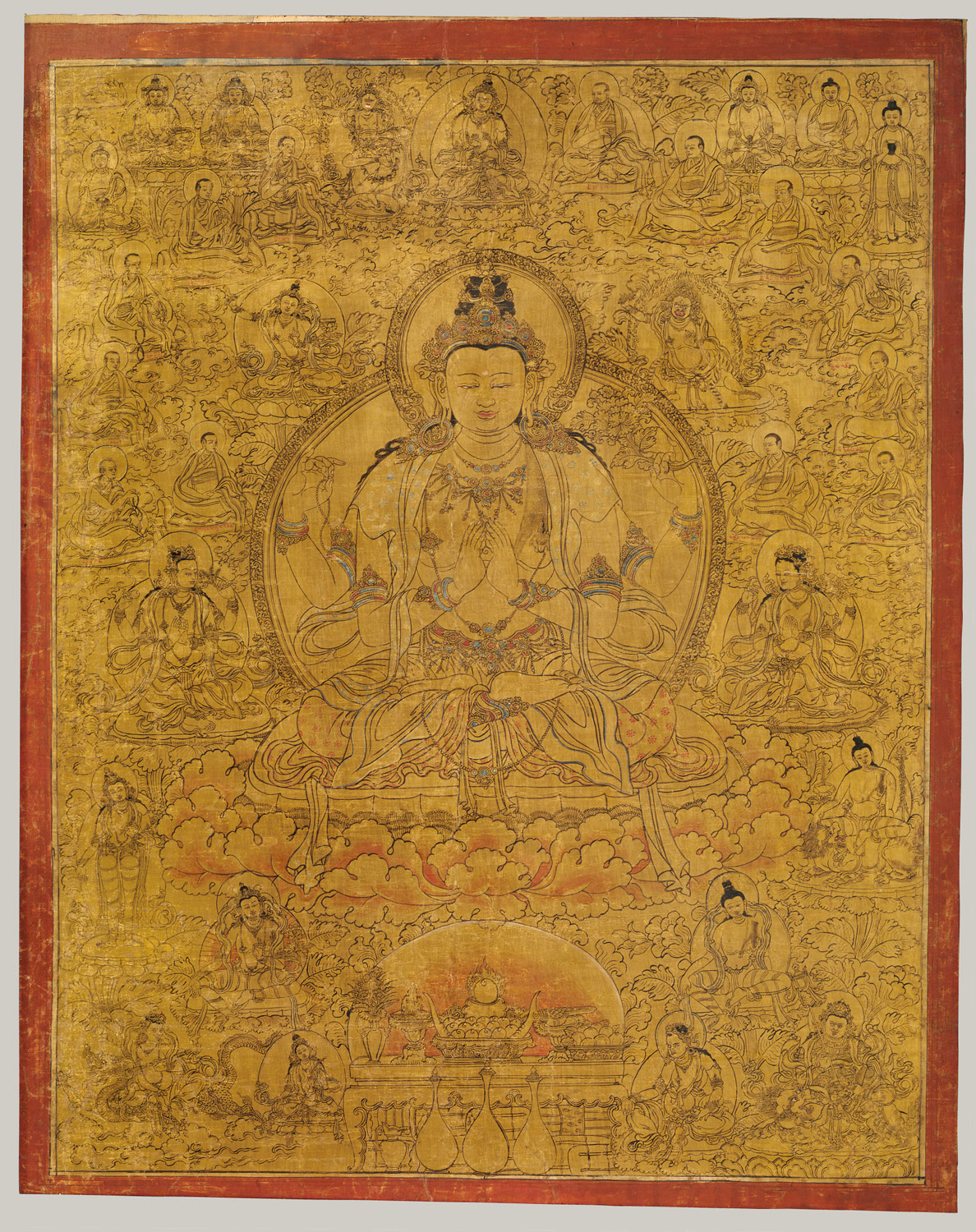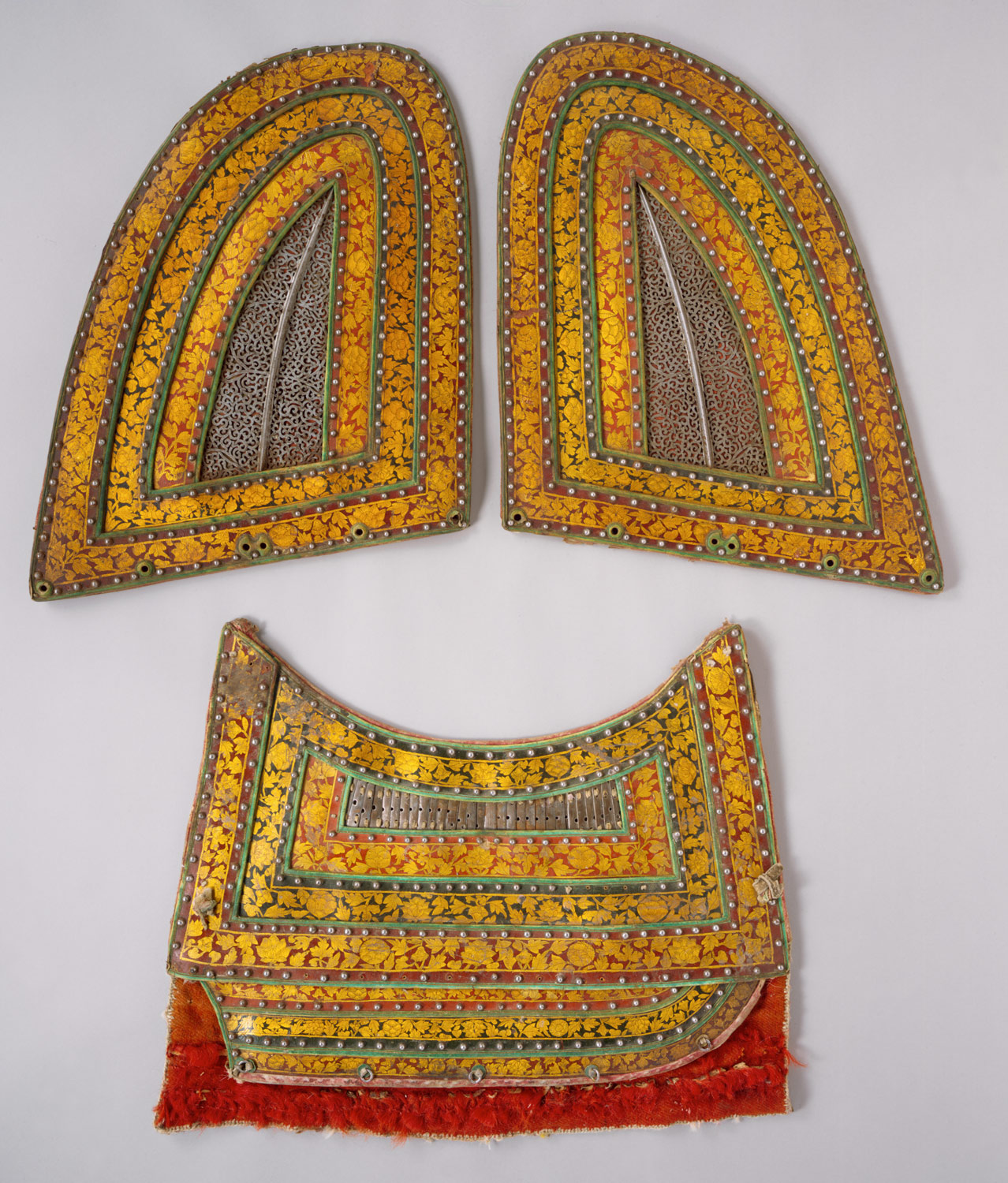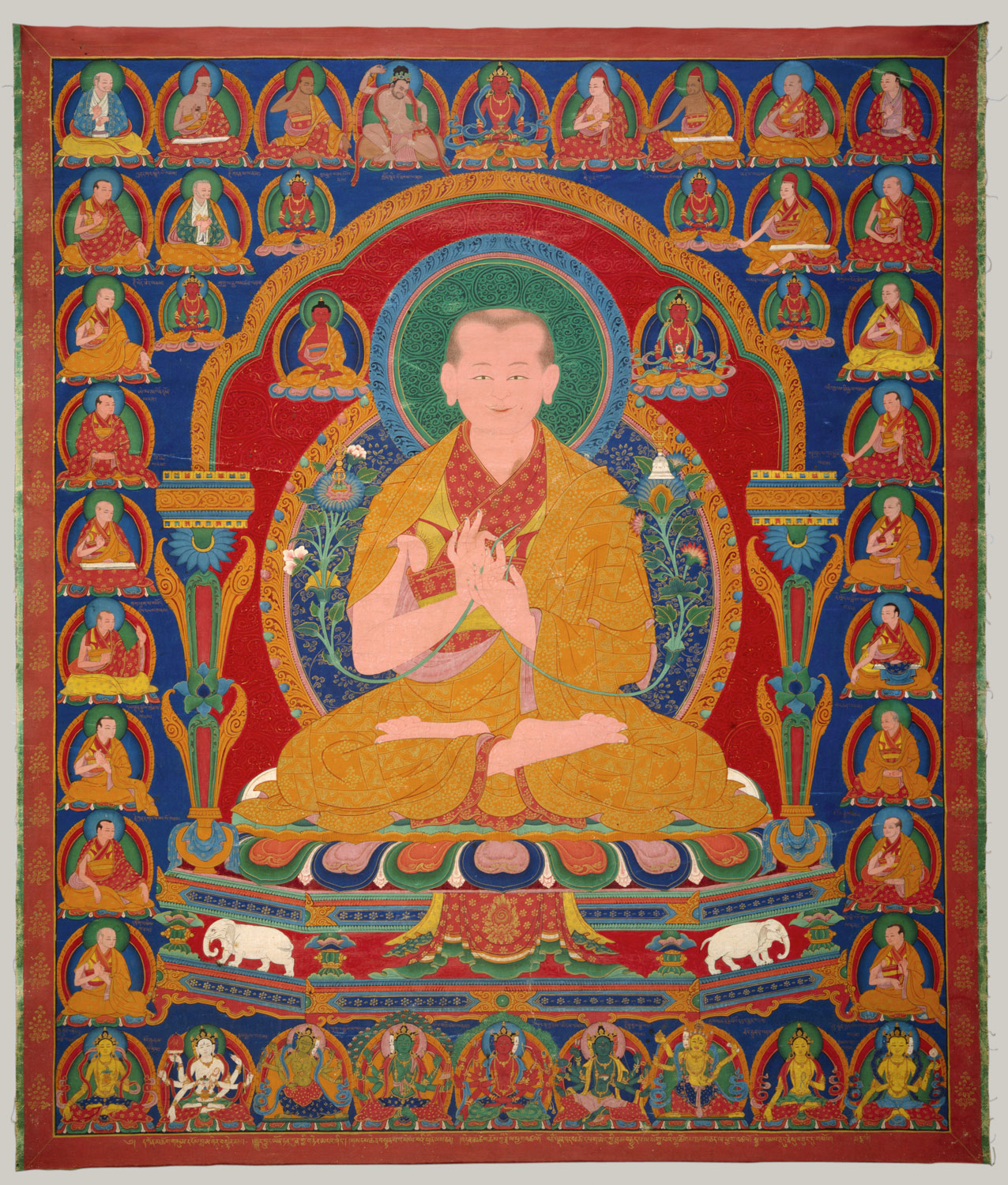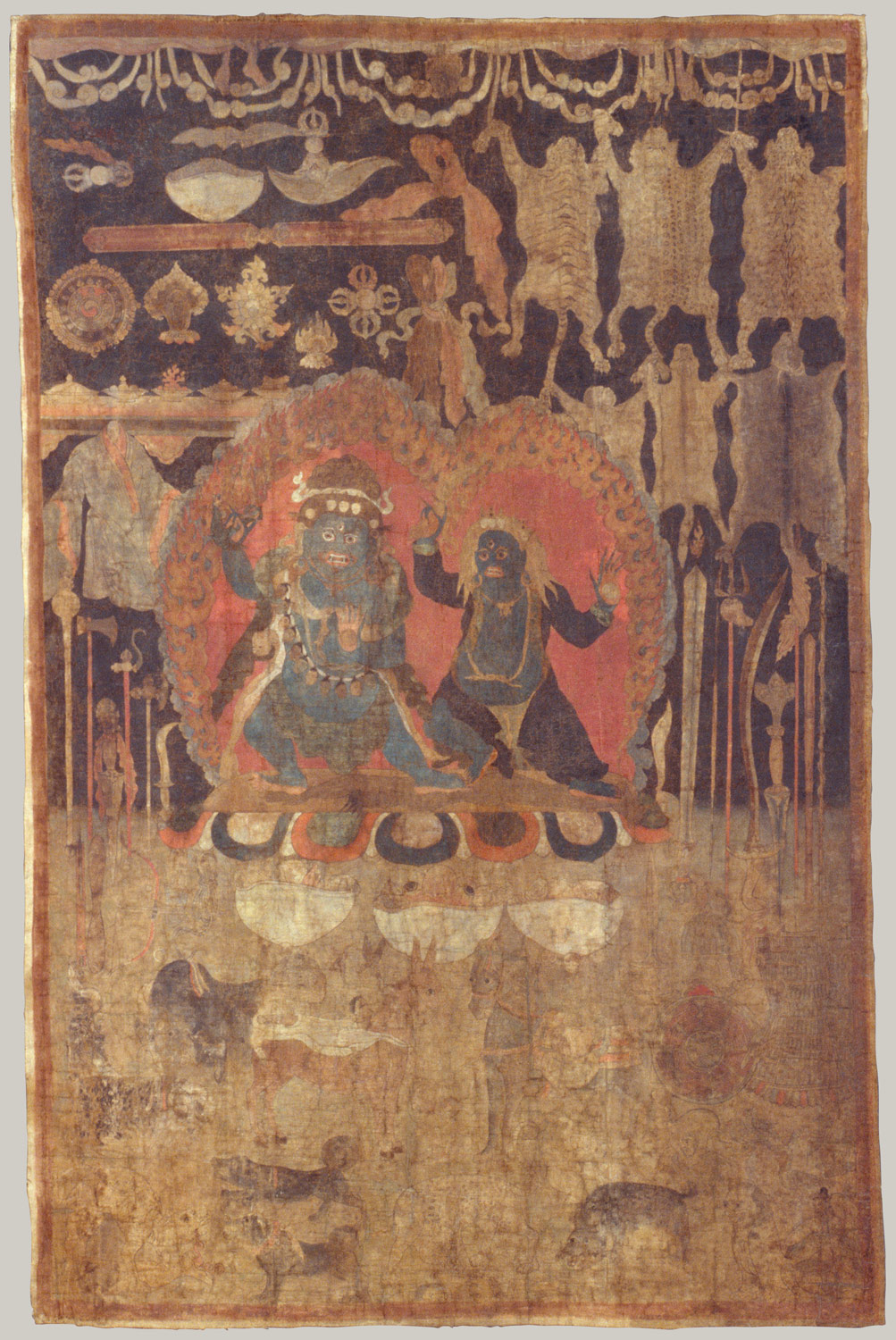Centralized states gradually form in the Himalayan region. In the fifteenth century, the Gelugpa sect of Buddhism consolidates its religious and temporal power in central Tibet with the help of Chinese patronage. Tibetan Buddhism, after centuries of looking to India for religious texts and teachers, develops a flourishing tradition in its own right. A distinctive indigenous and hybrid Buddhist painting style emerges in Tibet, drawing principally on Chinese and Nepali styles.
Himalayan Region, 1400–1600 A.D.
Timeline
1400 A.D.
1450 A.D.
NEPAL
TIBET
1450 A.D.
1500 A.D.
NEPAL
TIBET
1500 A.D.
1550 A.D.
NEPAL
TIBET
1550 A.D.
1600 A.D.
NEPAL
TIBET
Overview
Key Events
-
15th century
The Kathmandu Valley (in present-day Nepal) is united under Malla rule until 1482. Newari is the dominant language of the valley. Buddhism continues to expand its influence.
-
15th century
The Gelugpa school of Tibetan Buddhism, founded by Tsong Khapa in 1379, rises to political and religious prominence in central Tibet, becoming the most powerful of the four main Tibetan Buddhist schools (the others are Nyingmapa, Kagyupa, and Sakyapa). Leaders construct three major monasteries in the Lhasa area: Ganden in 1409, Drepung in 1416, and Sera in 1419. Monasteries act as the major schools and cultural centers of the Tibetan Buddhist tradition into the modern period. The royal court of Ming China patronizes Tibetan Buddhism, inviting lamas (religious teachers) to court, and bestowing gifts and titles on monks.
-
1484
After the death of King Jayayaksha (r. 1428–80), Nepal is divided into the three kingdoms of Kathmandu, Patan, and Bhaktapur (Bhadgaon), each ruled by one of his sons. The three Malla kingdoms flourish until 1768.
-
16th century
Mongol tribes migrate into northern Tibet. In 1578, Altan Khan, ruler of the Tumed Mongols, invites Sonam Gyatso, third incarnation of the abbot of Drepung, the main Gelugpa monastery, to his court. Khan bestows upon Gyatso the Mongolian title of “Dalai Lama” (“Ocean of Wisdom”). The title is also given posthumously to two abbots of Drepung monastery, thus Sonam Gyatso is actually the third to be so named. The title is hereditary and the fourth Dalai Lama is a grandson of Altan Khan, who, with his followers, converts to the Gelugpa school of Tibetan Buddhism. The Dalai Lama acts as the spiritual and temporal ruler of Tibet from this period, until the onset of Chinese rule in the twentieth century.
-
15th and 16th centuries
Bhutan remains a region of small principalities. The Drukpa subsect of the Kagyupa school of Tibetan Buddhism is the dominant religion in the region.
Citation
“Himalayan Region, 1400–1600 A.D.” In Heilbrunn Timeline of Art History. New York: The Metropolitan Museum of Art, 2000–. http://www.metmuseum.org/toah/ht/?period=08®ion=ssh (October 2002)
Related
Map
